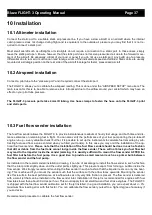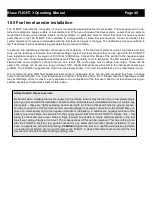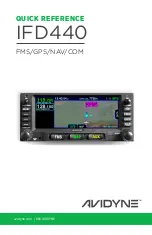
Blaze FLIGHT-3 Operating Manual
Page 41
10.6 RPM installation
The RPM input is quite universal. The RPM input can be used with signals from about 5Vpp to as much as 100Vpp. The
input is also AC coupled for easy installation. A noise filter is included that results in the input ignoring any high frequency
noise signals as long as this is below the detection threshold of about 2.5Vpp (Please see dipswitch settings below)
The input impedance of the rev counter input is approximately 10Kohm. You can use series resistors as well as load re -
sistors for applications that have unusual signals.
The 220Ohm ballast resistor can be connected across the RPM input to ground to reduce noise or secondary pulses on
the RPM line (This is often used with Rotax engines). The ballast resistor must not be inserted for direct magneto pickups
as the magneto pulse may have low energy in particular at idle.
After you have connected the RPM input terminals to the signal sources you will need to set the number of pulses per rev-
olution under the “RPM SETUP” menus. The calibration itself depends on your engine and rotor type and what kind of sig-
nal you are using.
Please see the engine RPM connection guide for connecting popular engine types to the FLIGHT-3.
Adjusting RPM sensitivity
The FLIGHT-3 has a sensitivity adjustment trimmers at the rear of the instrument. Adjust this trimmer using a small screw-
driver such that you get stable RPM readings over the entire RPM band of your engine. If your sensitivity is too high, you
may get unstable RPM readings (usually at higher RPM as electrical noise in the ignition system increases). If the sensi-
tivity is too low the RPM reading may remain at zero. Fully clockwise = maximum sensitivity.











































